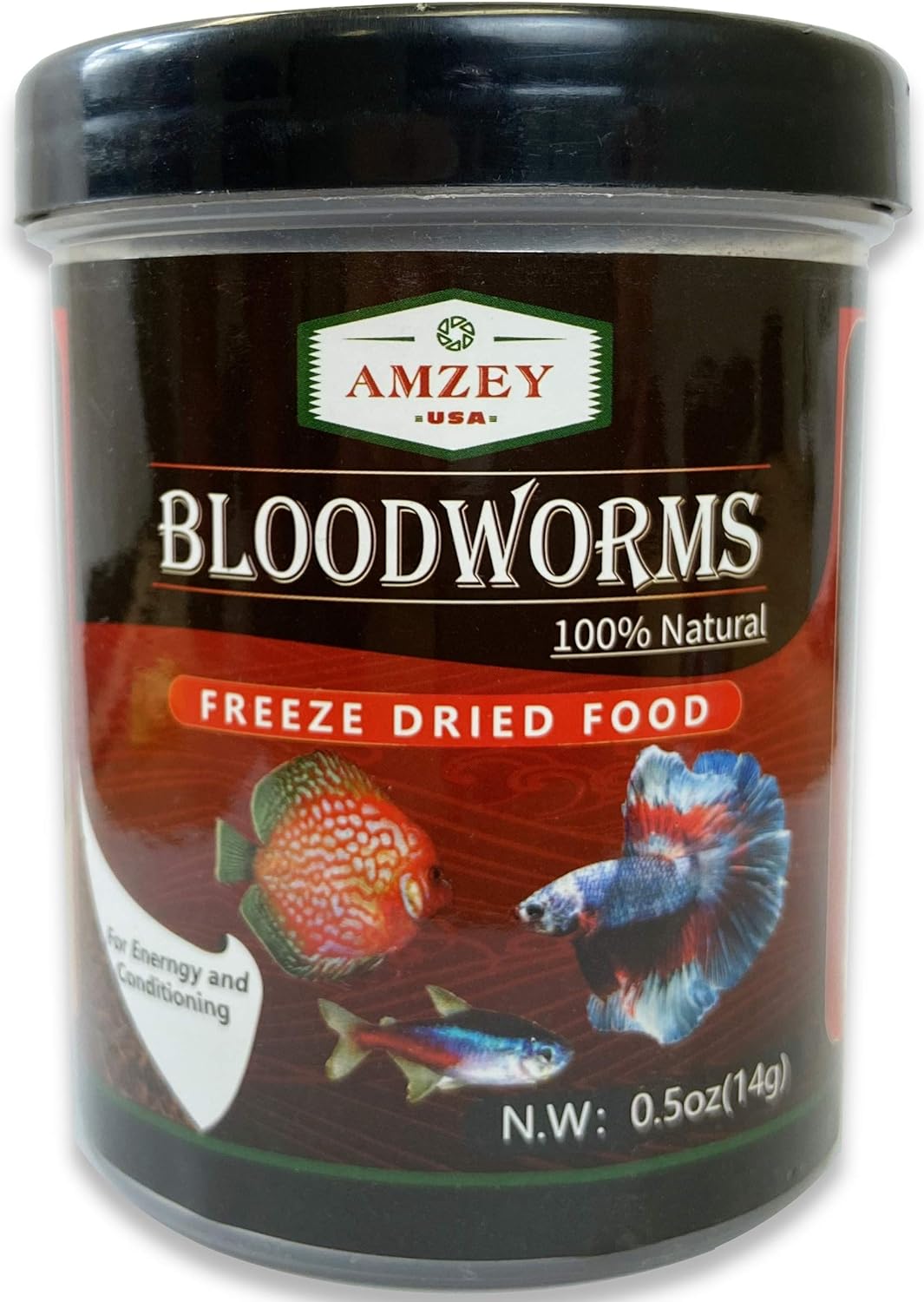Matt
Betta Uberis Wild Betta Fish Care, Setup, Feeding, and More!

Credit: Seriously Fish
The Betta uberis hails from the blackwater peat swamps of Indonesia, bringing a unique presence to dedicated aquarists interested in wild betta care. Their subtle beauty, intriguing behaviors, and specific care needs offer a rewarding challenge beyond the common Betta splendens.
| Care Aspect | Details |
|---|---|
| Tank Size | Minimum 5 gallons for a single Betta uberis. Larger tanks are needed for community setups. |
| Water Parameters | – Temperature: 74-80°F (23-27°C) – pH: 3.5-7.0 – Hardness: Soft to moderately hard |
| Diet | Primarily carnivorous. Feed a variety of high-quality, protein-rich foods like brine shrimp, daphnia, and specially formulated betta pellets. |
| Behavior | Generally peaceful but can be territorial, especially males. Suitable for species-specific tanks or with carefully chosen tank mates. |
| Compatibility | Best kept with other peaceful, small fish that prefer similar water conditions. Avoid fin nippers or overly active species. |
| Tank Setup | Dense vegetation and hiding spots. Low to moderate flow. Provide floating plants to mimic their natural habitat. |
| Lighting | Moderate. Avoid intense lighting to prevent stress. Natural light cycles are beneficial. |
| Water Change | Regular, at least 20-25% biweekly, to maintain water quality and reduce stress. |
Understanding the Needs of Betta Uberis
- True Blackwater Fish: Betta uberis require the soft, acidic conditions characteristic of their natural habitat. Using reverse osmosis (RO) water and a product for blackwater setups is usually essential. Aim for:
- pH: 3.5-6.0
- Hardness: Negligible, almost no detectable KH
- Temperature: 74-80°F (24-27°C)
- Tank Setup: A minimum of 5 gallons is recommended, with larger being better. Densely plant the tank (live or quality silk), and include natural elements like driftwood and Indian almond leaves. Filtration should be gentle, like a sponge or air-driven filter.
- Shy Nature: Wild Betta uberis are typically more timid than domestic Betta splendens. Provide plentiful hiding spots to reduce stress and bring out their natural behaviors.
Feeding Your Betta Uberis
In their natural habitat, these fish are insectivores. Offer a varied diet to ensure optimal health:
- Live Foods: Their favorites include bloodworms, brine shrimp, and daphnia. These should be staples in their diet.
- Frozen Foods: Frozen versions make good substitutes if live foods are unavailable.
- Pellets: Choose high-quality betta pellets with minimal fillers and offer them sparingly as an occasional supplement.
Temperament and Tank Mates
- Best Kept Alone: Male Betta uberis are generally solitary. Females can sometimes co-exist in a larger, heavily-planted tank, but close observation is essential, as aggression can still occur.
- Potential Community Setup: If attempting a community tank, choose companions carefully. Species must tolerate similar water conditions and be small, peaceful, slow-moving fish that won’t intimidate the betta. Opt for species like certain dwarf rasboras or bottom-dwelling Corydoras catfish. Research options thoroughly.
Breeding Betta Uberis
Breeding Betta uberis is an advanced endeavor for experienced betta keepers. Replicating their specific water parameters is crucial for success. Betta uberis are bubble-nesters, and the pair will exhibit elaborate courtship behaviors before spawning. Fry are extremely small and sensitive, requiring specialized feeding with live cultures of microscopic foods.
Additional Notes
- Sourcing: Finding a reliable breeder specializing in wild bettas is crucial for acquiring healthy Betta uberis stock.
- Disease Susceptibility: Wild bettas may be more prone to certain parasites or diseases than domestic bettas. Having a quarantine tank set up before bringing home new fish is recommended.
- Beginner-Friendly? Due to their specific care requirements, Betta uberis are not generally recommended for beginner aquarists.
- Observation is Key: Monitor your Betta uberis’ behavior carefully to ensure they thrive and adjust their care as needed.
The Rewards of Wild Bettas
Betta uberis offer a chance to observe a beautiful fish closer to its natural form. With meticulous care and attention to their unique needs, they will become a captivating centerpiece for your aquarium.
Betta Coccina Care, Fish Tank Setup, Feeding & More


Credit: Seriously Fish
If you want to add a flash of fiery color and fascinating behavior to your aquarium, the Scarlet Betta (Betta coccina) might be your ideal fish! This stunning wild betta comes from Southeast Asia’s peat swamps and streams, offering aquarists a unique and rewarding experience.
What Sets Betta coccina Apart
- Brilliant Coloration: Betta coccina males are named for their intense red coloration that deepens when they are excited or flaring. While smaller and less vibrant, females still possess a beautiful brown-red hue.
- Compact Size: This Betta species is relatively small, making them a suitable option even for modestly-sized aquariums.
- Bubble-Nesting Behavior: Like many bettas, male Betta coccina create intricate bubble nests on the water’s surface as part of their breeding ritual.
Setting Up a Betta coccina Paradise
Betta Fish Aren’t Simple Fish To Care For! Click Here For My Favorite Care Guide Book…
- Tank Size: While smaller than some bettas, a minimum of 5 gallons is recommended for a single Betta coccina. A 10-gallon tank offers even more space for these active fish to explore.
- Mimicking Their Habitat: Replicate their natural environment with dense plant growth (live or high-quality silk), plenty of driftwood for hiding spots, and Indian almond leaves to release beneficial tannins.
- Filtration: Choose a gentle filtration system, like a sponge filter, to avoid creating strong currents.
- Water Conditions: Betta coccina thrive in soft, acidic water. Creating these conditions requires special attention:
- pH: 4.5-6.5
- Hardness: Very soft (GH 0-5, KH 0-3)
- Temperature: 75-82°F (24-28°C)
- You’ll likely need to use reverse osmosis (RO) water and remineralize it specifically for blackwater environments.
Feeding Your Scarlet Betta
These carnivorous fish will relish a varied diet. Offer them primarily:
- Live Foods: Bloodworms, daphnia, mosquito larvae, and brine shrimp are all favorites.
- Frozen Foods: A good substitute when live foods aren’t available.
- Pellets: Offer occasionally as a supplement, choosing high-quality betta-specific pellets.
Betta coccina Temperament and Tank Mates
Males of this species are best kept alone. While less aggressive than typical Betta splendens males, they will exhibit territorial behavior. Multiple females may coexist in a densely planted tank, but any signs of aggression require close observation.
If considering a community tank, choosing tank mates requires extra attention. Ideal tank mates are peaceful and inhabit similar acidic, soft water conditions. Some options include small tetras, rasboras, or bottom-dwelling fish like Corydoras. It’s essential to research any potential additions thoroughly.
Additional Considerations
- Sourcing: Locating Betta coccina may require finding a specialized breeder or online retailer concentrating on wild betta species.
- Potential Health Issues: Wild bettas can sometimes be more susceptible to certain parasites or diseases. Buy from reputable sources and consider a quarantine period for new fish.
- Behavioral Enrichment: Provide a stimulating environment with live plants offering broad leaves for resting, varying feeding locations, and occasional rearranging of décor for novelty.
The Allure of the Wild Betta
The Betta coccina offers aquarists a chance to care for a wild betta with dazzling colors and natural behaviors. You can create a thriving environment for this stunning fish with a little extra dedication to their specific needs.
Betta Hendra Care, Tank Setup, and More!


Discover the allure of Betta hendra, a lesser-known gem in the world of wild betta fish. Native to slow-moving streams in Indonesia, these vibrantly colored fish offer a fascinating glimpse into the diverse world of bettas beyond the familiar Betta splendens. Let’s explore what makes Betta hendra unique and how to provide them with the best possible care.
Understanding Betta Hendra
- Appearance: Betta hendra are smaller than typical Betta splendens. Males boast bold red, blue, and iridescent green coloration, particularly when flaring. Females are less vibrant but still beautifully patterned.
- Bubble Nesters: Like many bettas, male Betta hendra create intricate bubble nests for breeding purposes.
- Peaceful Nature: Compared to Betta splendens, Betta hendra is less aggressive, making it potentially suitable for certain community setups.
Elements of Optimal Betta Hendra Care
Betta Fish Have Very Specific Needs… Click Here For My Favorite Betta Care Guide Book…
- Tank Size and Layout: While Betta Hendra are a smaller species of Betta, they are active and appreciate spaceto swim. 5 gallons is recommended, with larger tanks providing an even more enriching environment. Replicate their natural environment with dense plant growth (live or high-quality silk plants), driftwood, and Indian almond leaves.
- Water Conditions: Betta hendra prefer a slightly acidic and soft water environment:
- pH: 6.0 – 7.0
- Hardness: Soft to moderate (GH 5-12, KH 0-8)
- Temperature: 76-82°F (24-28°C)
- Filtration: Opt for a gentle filter or air-powered sponge filter that won’t create strong currents.
- Feeding: In the wild, these fish are carnivores. Offer a varied diet including live foods like brine shrimp, daphnia, and bloodworms, with frozen alternatives when necessary. Supplement their diet with a high-quality betta pellet occasionally.
Tank Mates for Betta Hendra
Betta hendra males are best kept singly, though females can sometimes cohabitate in a spacious, heavily-planted tank. If considering a community tank for Betta hendra, choose potential tankmates very carefully:
- Peaceful Species: Opt for small, docile fish that inhabit similar water conditions. Some potential options include Rasboras, certain Tetras, and bottom-dwelling Corydoras catfish.
- Slow-moving: Avoid fin-nipping species or fish with long, flowing fins that might tempt a betta.
- Observation is Crucial: Monitor any community tank closely for signs of aggression or stress.
The Challenge of Breeding Betta Hendra
Breeding Betta hendra follows similar principles to other bubble-nesting Bettas. Prepare a separate breeding tank and condition your pair with high-quality foods. The process involves elaborate courtship and meticulous fry rearing. Thorough research is essential for success.
Things to Remember
- Availability: Betta hendra are less common in the aquarium trade than Betta splendens. You’ll likely need to locate a breeder specializing in wild bettas.
- Sensitivity: Pay close attention to water parameters and avoid drastic changes as Betta hendra can be less forgiving than selectively bred bettas.
The Rewards of Wild Bettas
Betta hendra offers a beautiful and less aggressive alternative to commonly available bettas. Their unique coloration and relatively peaceful nature make them a captivating addition to a thoughtfully-designed aquarium.
Betta Pallifina Care, Tank Setup, and More


Credit: Seriously Fish
If you’re looking for a betta fish that stands out from the crowd, Betta pallifina might be your perfect match. This wild betta boasts stunning iridescent blue and green coloration and an energetic personality. Native to the peat swamp forests of Borneo, Betta pallifina provides a unique and captivating addition to a thoughtfully-designed aquarium.
Understanding the Needs of Betta Pallifina
- Mimicking Their Natural Habitat: Betta pallifina come from blackwater environments, characterized by soft, acidic water and abundant plant life. Replicating these conditions is crucial for their well-being.
- Tank Size: 5 gallons for a single betta is a good start, but larger is better. Opt for a long tank rather than a tall one to provide more swimming space.
- Filtration: A gentle sponge filter or air-driven filter is necessary to avoid strong currents.
- Water Parameters: Betta pallifina are sensitive to water conditions. Aim for these parameters:
- pH: 5.0-6.5
- Hardness: Very soft (GH 0-5, KH 0-3)
- Temperature: 75-80°F (24-27°C)
- Décor: Dense planting with live or silk plants, driftwood, and Indian almond leaves (to release beneficial tannins) recreates their natural environment.
- Tank Mates: Betta pallifina males are best kept alone. A small group of females might be possible in very large, well-structured tanks, but requires careful observation. Even females can sometimes show aggression toward each other.
Feeding Your Betta Pallifina
In the wild, these fish are carnivorous predators. Provide a varied diet for optimal health:
- Live foods: Bloodworms, blackworms, brine shrimp, daphnia – these are their favorites.
- Frozen foods: Substitute for live foods when necessary.
- High-quality pellets: Choose betta-specific pellets as a supplemental food.
Important Considerations for Betta Pallifina
- Water Preparation: Unlike with some betta species, using straight tap water is generally unsuitable for Betta pallifina. They require very soft, acidic water. You’ll likely need to use reverse osmosis (RO) water and remineralize it with products specifically designed for blackwater aquariums. Testing kits to accurately measure pH, KH, and GH are crucial.
- Tank Maintenance: Betta pallifina require pristine water conditions. More frequent partial water changes (up to 50% weekly) and gentle substrate vacuuming will help prevent any water quality issues.
- Rarity and Expense: Betta pallifina are less common in the aquarium trade, making them harder to find and potentially more expensive than standard pet-store bettas.
- Behavioral Observation: Closely monitor Betta pallifina, especially when introducing them to a new tank. They can be a little more skittish than some selectively bred bettas. Providing numerous hiding spots will help them feel secure.
Breeding Betta Pallifina: A Note
Betta pallifina are mouthbrooding bettas, meaning the male holds the eggs in his mouth for incubation. Breeding this species is a complex project requiring extensive research and betta care experience. Successful breeding contributes to the preservation of these beautiful fish.
The Joy of Wild Bettas
Betta pallifina offer a rewarding experience for aquarists seeking something different. Their striking appearance, natural behaviors, and specific care requirements make them a fascinating and captivating addition to the world of betta keeping!

Betta Siamorientalis Care, Tank Setup, Breeding
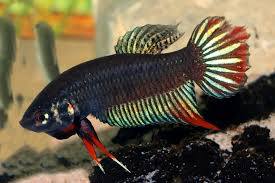

credit: Seriouslyfish.com
Betta fish enthusiasts often focus on the dazzling, long-finned Betta splendens, the common variety found in most pet stores. However, the world of Betta fish is vast, and one particularly fascinating species is the Betta siamorientalis. This wild betta offers something unique – a glimpse into the natural beauty and behaviors of the Betta genus.
Understanding the Wild Betta Siamorientalis
Betta siamorientalis are native to Thailand and Vietnam, inhabiting slow-moving streams and rice paddies. Unlike their selectively-bred relatives, Betta siamorientalis have a shorter, more compact finnage and boast subtle yet beautiful coloration in green, blue, and red shades. These fish are also a part of the bubble-nesting group of bettas, meaning males create elaborate nests to protect their eggs.
Setting Up a Betta Siamorientalis Paradise
I Wish I Knew This About Bettas… Click Here To Read…
- Tank Size: 5 gallons is recommended for a single Betta siamorientalis. However, a larger tank (10 gallons or more) provides additional swimming space and a more stable environment.
- Filtration: Choose a gentle filter like a sponge filter. Wild bettas prefer slow-moving water.
- Heater: This species thrives in warm water between 75-82°F (24 and 28°C). Install a reliable aquarium heater to maintain these temperatures.
- Décor and Plants: Simulate their natural environment with plenty of live or silk plants. Include driftwood or caves for hiding spots and security. Indian almond leaves provide additional benefits, releasing tannins that mimic their native habitat.
- Tank Mates: Male Betta siamorientalis should generally be kept alone. Females can sometimes co-exist in a larger, heavily planted tank, but close monitoring is necessary. Even females might show aggression toward each other.
Feeding Your Betta Siamorientalis
Wild bettas are carnivores. Provide them with a diverse diet to ensure optimal health:
- Live Foods: Their favorites include bloodworms, daphnia, brine shrimp, and mosquito larvae.
- Frozen Foods: A good alternative to live foods, these include frozen bloodworms and brine shrimp.
- Pellets: Choose high-quality betta pellets formulated with minimal fillers. Offer them occasionally to add variety.
Water Conditions for Optimal Health
Betta siamorientalis can be slightly more sensitive to water parameters than selectively-bred bettas. Pay attention to these factors:
- pH: Aim for a pH between 6.0 and 7.5.
- Hardness: Soft or moderately hard water is preferred (GH 5-12, KH 0-8).
- Ammonia and Nitrites: Maintain a zero level for both ammonia and nitrites.
- Nitrates: Keep nitrates below 20 ppm with regular water changes.
Additional Considerations
- Availability and Sourcing: Betta siamorientalis are rarer in the aquarium trade than Betta splendens. You’ll likely need to find a specialized breeder or online retailer concentrating on wild betta species. Always ensure you are sourcing your fish from a reputable source that prioritizes the health of the animals.
- Water Changes: Betta siamorientalis benefit from regular partial water changes (25-50% weekly) to maintain pristine water conditions.
- Jumping: Like other bettas, Betta siamorientalis are excellent jumpers. Securely lid your tank to prevent escapes.
- Tank Cover: Provide floating plants or driftwood that break the surface for resting areas near atmospheric air access.
Breeding Betta siamorientalis
Breeding Betta siamorientalis offers a fascinating but more advanced challenge for aquarists. Unlike the relatively simple process with some Betta splendens, breeding this wild Betta requires dedication and meticulous preparation. 

- Separate Breeding Tank: Set up a dedicated breeding tank (around 5-10 gallons) with a gentle filter, heater, and plenty of hiding spots for the female.
- Conditioning the Pair: Feed the male and female high-quality live foods for several weeks prior to breeding to promote good health and egg production.
- Introductions and Courtship: Carefully introduce the pair into the breeding tank. Observe their behaviors. The male will build a bubble nest and display elaborate courtship dances to attract the female.
- Spawning: If receptive, the female will develop vertical stripes and join the male under his nest. During spawning, eggs are released and fertilized, and the male carefully collects them in his bubble nest.
- Post-Spawning Care: Remove the female after spawning. The male will usually nest and fiercely guard the eggs. He will not eat during this period.
- Fry Care: Once hatched, tiny fry need specialized foods like infusoria or microworms. As they grow, gradually transition them to larger foods.
Important Notes:
- Breeding any betta can be unpredictable. Sometimes pairs may not be compatible.
- Fry care for Betta siamorientalis can be demanding. Be prepared to raise live cultures of very small foods.
- Thorough research is crucial before attempting to breed Betta siamorientalis. For guidance, connect with experienced breeders or online communities specializing in wild bettas. You can also learn all about betta fish eggs and identifying them here.
Betta Stiktos Care, Tank Setup, Breeding


Betta stikos, a relatively rare species within the aquarium trade, hail from the stagnant waters of the Mekong drainage in Cambodia. These fish prefer environments with little to no current, thriving in ponds, flooded fields, or ditches. Known for their shy yet territorial nature, Betta stikos present a unique challenge and reward for aquarists.
Setting Up the Ideal Tank
Size and Tank Size and Layout: A tank of at least 30cm is recommended for individual Betta stikos, with larger sizes being better to accommodate their territorial instincts and provide space for potential tank mates. The layout should mimic their natural habitat as closely as possible, including features such as:
- Low-tech planted areas
- Makeshift caves and driftwood for hiding
- Minimal bright lighting to replicate the dimly lit environments of their native habitats.
Water Conditions: Achieving and maintaining the correct water conditions is crucial for the health of Betta stikos. The ideal parameters include:
- Temperature: 22-26°C
- pH levels: 5-7.5
- Water hardness: Up to 10°dGH
- Regular monitoring and maintenance to ensure these conditions remain stable, especially during the breeding process.
Nutritional Needs
Betta stikos are carnivorous, requiring a diet consisting of insects and worms to mimic their natural feeding habits. Preferred food sources include live or frozen baby brine shrimp, daphnia, tubifex, bloodworms, and mosquito larvae. Pellet food is often rejected in favor of these more natural options.
Companion Compatibility
While generally calm, Betta stikos can exhibit territorial aggression, making the selection of tank mates crucial. Suitable companions may include:
- Micro fishes such as Celestial Pearl Danios or Boraras, known for their calm demeanor
- Shrimps should be added before the Betta stikos to establish territory and reduce the risk of aggression.
Breeding Insights
Breeding Betta stikos involves a series of steps aimed at encouraging natural behaviors and ensuring the safety of both the adults and the offspring:
- Introduction and Courtship: A clear divider may be used to introduce the male and female, allowing them to acclimate to each other’s presence without direct contact. This prevents premature aggression and allows for the display of behaviors that are part of the courtship process.
- Bubble Nest Construction: The male constructs a bubble nest at the water’s surface, signaling readiness for breeding. The environment should support this behavior with calm water and suitable nesting materials.
- Spawning: Following successful courtship, the female releases eggs which the male fertilizes and places into the bubble nest. Careful monitoring is essential to manage potential aggression from the male towards the female post-spawning.
Fry Care
The post-spawning care of Betta stikos fry involves a delicate balance of appropriate feeding and maintaining ideal water conditions:
- Start with infusoria or specially formulated liquid fry food, transitioning to baby brine shrimp as the fry grow.
- Frequent, small feedings are crucial to meet the high metabolic demands of the developing fry without compromising water quality through overfeeding.
Disease Prevention and Management
Common diseases affecting Betta fish, including Betta stikos, often stem from poor water quality or stress. Fin rot, Ich, and velvet disease are notable concerns, with prevention focusing on maintaining clean water, stable environmental conditions, and prompt treatment with appropriate medications when necessary. Learn more about betta diseases here.
Conclusion
Caring for Betta stikos is a rewarding endeavor that requires attention to detail in tank setup, water conditions, nutrition, and breeding practices. As with all aquarium inhabitants, a commitment to ongoing learning and adaptation to the needs of Betta stikos will ensure their health and happiness within the aquatic community.
This guide has covered the essentials, but remember, each Betta stikos is an individual, and observation and responsiveness to their specific behaviors and needs will further enhance your success in caring for these exquisite fish.
Wild Betta Fish Types: Betta species for your aquarium
If you think bettas are just vibrant fighters in bowls, think again! The world of wild betta fish is a realm teeming with diversity and surprising behaviors. With a staggering 73 known species, these stunning fish are far more than their domesticated cousins.
Wild bettas offer captivating alternatives to the ubiquitous Siamese fighting fish. From tiny bubble-nesters to larger, fascinating mouthbrooders, each species boasts unique adaptations and personalities.
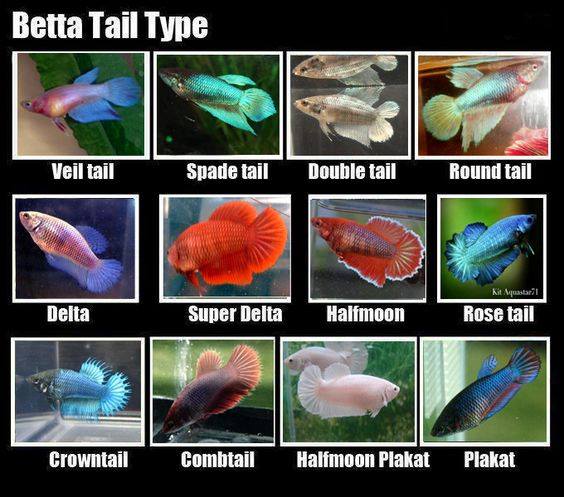

Wild Betta Species (with pictures)
Betta Fish Are Not Easy To Care For! Click Here For What You Need to Know…
Here’s a glimpse into the diverse world of wild betta species:
- Betta Splendens (Siamese Fighting Fish): The iconic ancestor of domestic bettas, this species is known for its bold coloration and somewhat aggressive nature.
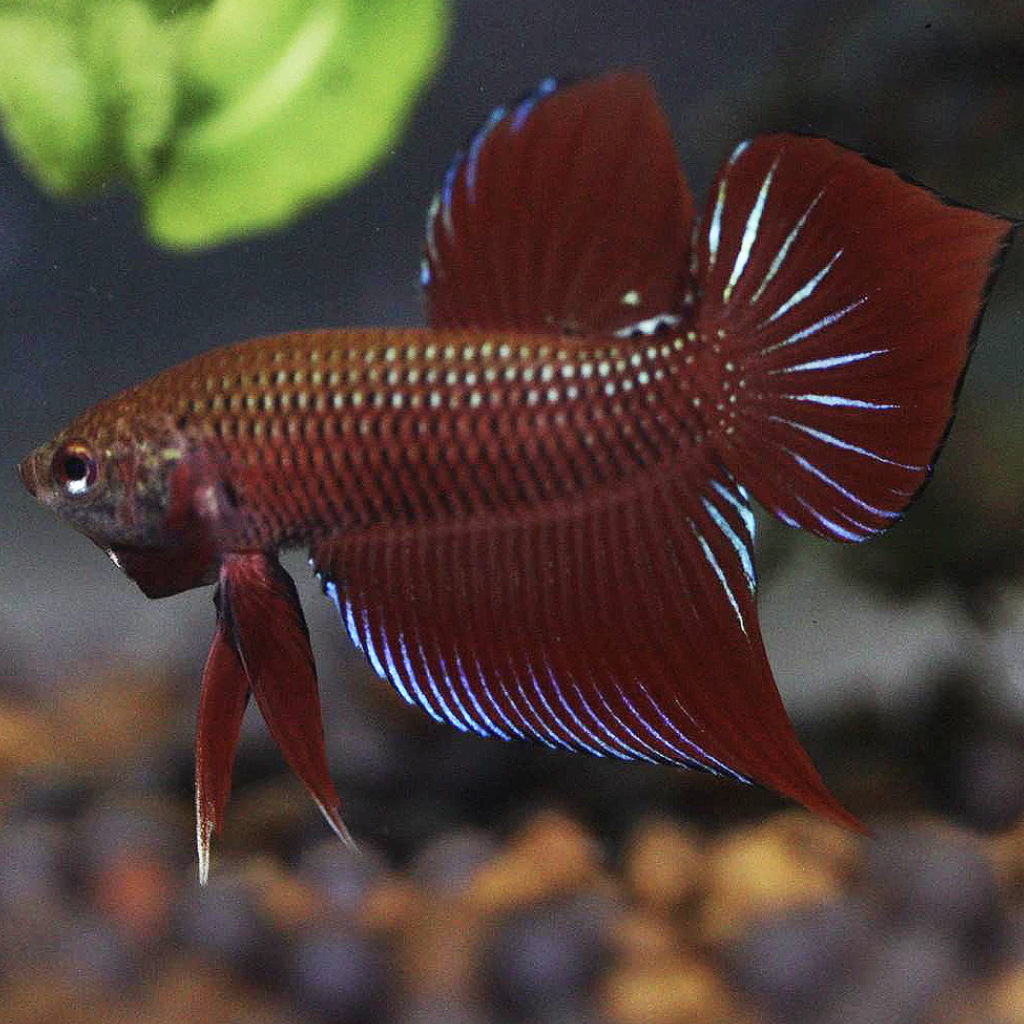

- Betta Imbellis (Peaceful Betta): This Malaysian beauty sports a shimmering green body with a striking red marking on its tail fin. They truly live up to their ‘peaceful’ name.
![]()
![]()
- Betta Smaragdina (Emerald Betta): This Thai stunner shimmers with iridescent green-blue scales and bursts of red in its fins. They’re one of the hardiest wild bettas, great for beginners!
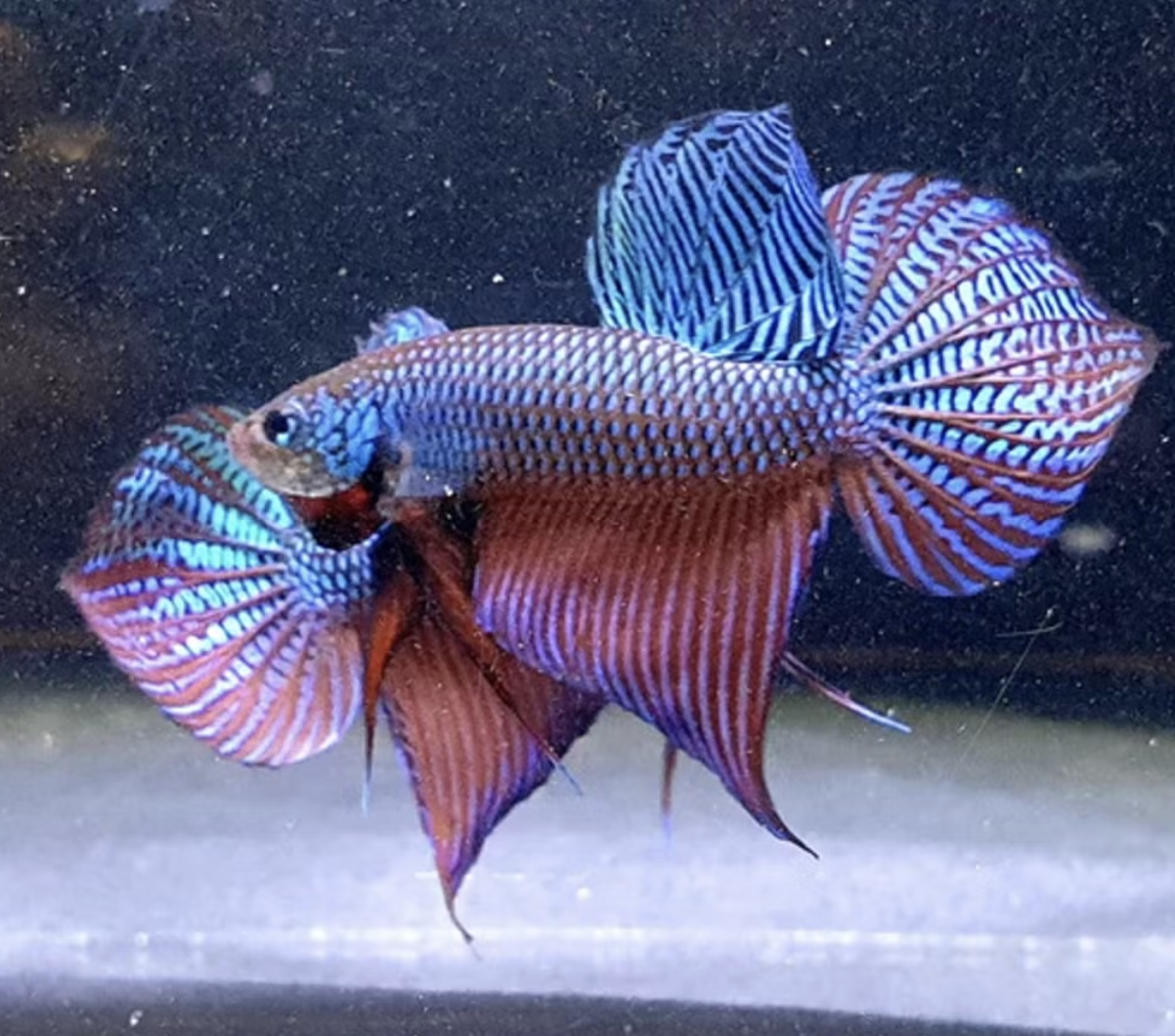

- Betta Mahachaiensis (Mahachai Betta): Another Thai native, this betta sports metallic green scales, red fins, and a unique ‘mask’ of black across the face. They are close cousins of Betta splendens.


- Betta Macrostoma (Brunei Beauty): This large and powerful betta is a paternal mouthbrooder prized for its distinct markings. Males can change patterns in a flash, becoming remarkably colorful under certain conditions.
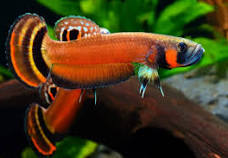

- Betta Coccina (Scarlet Betta): Bold red fins and a deep crimson body mark this fiery fish. They are mouthbrooders found in Indonesian peat swamps, where the water is soft and acidic.


- Betta Foerschi: A Bornean mouthbrooder that thrives in acidic waters and shares some coloration with Betta hendra.
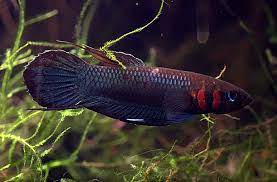

- Betta Rubra: This Sumatran wonder wows with its deep red hue. Males are fiercely devoted parents, protecting eggs and fry.
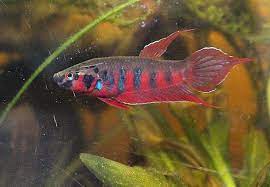

- Betta Channoides (Snakehead Betta): Instantly recognizable by its bright orange-red tones and surprisingly peaceful disposition. It’s perfect for those interested in a community of wild bettas.
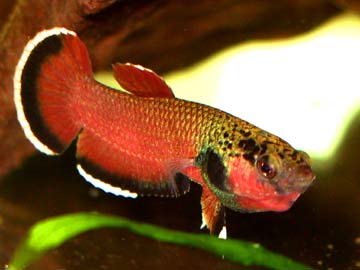

Stiktos Group
- Betta Stiktos: A tiny betta with a big personality. They sport a black body with a scattering of iridescent blue spots. Despite their size, males can be feisty and are known for their beautiful bubble nests.


Siamorientalis Group
- Betta Siamorientalis: This species features a striking blue body with a contrasting red splash on the gill cover. Known as the blue betta, it is also known for being relatively peaceful, they can sometimes be kept in community settings.


Others
-
Betta Pallifina: A mesmerizing betta with an almost translucent body and delicate fins sporting hints of blue and red. They prefer cooler waters than many other wild betta species.


-
Betta Hendra: This species shares some similarities with Betta foerschi, though it tends to have a more subdued coloration. They are mouthbrooders found in the same habitats as Betta foerschi.


-
Betta Uberis: Another mouthbrooding betta with a unique beauty. Their subdued body coloration is accented by vibrant blues and reds in their fins, resembling fireworks.


Embarking on Your Wild Betta Adventure: A Guide
Ready to bring the vibrancy of wild bettas into your aquarium? Click here for our article on betta fish care.
Consider these factors:
- Beginner’s Bettas: If you’re new to wild bettas, opt for species from the Betta splendens complex, like Betta imbellis, as they tend to be more forgiving.
- Mouthbrooder Marvels: For a taste of this unique behavior, the manageable size and potential for group living make Betta channoides a good starter.
- Advanced Beauty: Betta macrostoma (Brunei Beauty) rewards experienced aquarists seeking a challenge with its dazzling appearance.
Caring for a Piece of the Wild
- Know Your Betta: Research is essential! Understand your chosen species’ specific water needs, ideal tank setup, and dietary preferences.
- Nature’s Touch: To promote your betta’s health, replicate their natural environments, use plants and hiding places, and ensure proper water chemistry.
- Temperament Matters: Some wild bettas, particularly the wild-type Betta splendens, are territorial. Consider solitary setups or compatible tankmates carefully.
The Allure of Wild Bettas
Exploring the world of wild bettas is a journey rich in beauty and responsibility. From the gentle Betta imbellis to the dazzling Betta rubra, enthusiasts of all levels can discover a treasure. By responsibly caring for them, you gain a dazzling aquarium centerpiece while supporting the understanding and conservation of these fascinating fish.
Wild Betta Fish Care Guide 101: Food, Tank, Habitat, Breeding
Wild betta fish, with their striking colors and fascinating behaviors, are captivating enthusiasts worldwide. Wild bettas display a different beauty than their domesticated counterparts, bred for vibrant colors and long fins. This article dives into the unique world of wild bettas, outlining everything you need to know to provide them with a healthy and stimulating environment. From setting up the perfect tank to selecting the suitable tank mates and diet, we’ve got you covered.
Chapter 1: Betta Anatomy Basics
Click Here For My Favorite Book On Betta Fish Care For a Happy Fish
Originating from the tranquil rice paddies and warm, shallow waters of Southeast Asia, betta fish (Betta splendens) captivate enthusiasts with their extraordinary beauty and intriguing personalities. Known for their striking fins and array of colors, bettas possess a unique charm that has garnered a dedicated following around the globe.
Bettas are not only admired for their appearance but also for their remarkable adaptability and resilience. One of their most distinctive features is the labyrinth organ, a specialized part of their respiratory system that allows bettas to breathe atmospheric air directly from the water’s surface. However, the allure of keeping a betta fish goes beyond their ability to breathe air or their stunning looks. Bettas exhibit a wide range of behaviors that reflect their complex personalities. From the creation of intricate bubble nests by males as a part of their breeding ritual to their curious exploration of the aquarium, bettas offer endless fascination for their caretakers.
Betta Anatomy
Understanding the anatomy of a betta fish is crucial for recognizing their needs and identifying any health issues that may arise. Let’s explore the key anatomical features of these beautiful creatures:
- Fins: Bettas are renowned for their magnificent fins, with variations such as veiltail, crowntail, and halfmoon being especially popular among enthusiasts. Each fin serves a purpose, from the caudal (tail) fin used for propulsion to the pectoral fins for steering and braking.


Betta fin types
- Body: A betta’s streamlined body allows for efficient movement through water. It is typically elongated and can display a wide range of vibrant patterns and colors, which are often a sign of health and vitality.
- Gills and Labyrinth Organ: While bettas have gills like other fish, they also possess a labyrinth organ that allows bettas to breathe oxygen like land animals directly. This evolution enables them to survive in low-oxygen environments.
What Are The Types of Wild Betta Fish?
Click Here For How To Take Care of Betta Fish
Wild betta fish originate from dense jungles and rice paddies in Southeast Asia, thriving in shallow, slow-moving waters. The Betta splendens complex, known for its diversity, includes six distinct species, each with unique characteristics. Wild bettas are highly adaptable, exhibiting a wide range of colors and fin types, albeit less extravagant than the ornamental varieties found in pet stores.
Betta splendens aka Siamese fighting Fish
Betta imbellis aka Peaceful Betta, Crescent Betta


Betta smaragdina aka Emerald Betta
Common names:
Distribution: Cambodia, Thailand
Betta unimaculata complex
Chapter 3: The Essence of Water
Wild Betta Fish 101: Care, Tank, Breeding & More
Did you know that the dazzling betta fish you see in pet stores started their journey in the muddy rice paddies of Southeast Asia? These vibrant fish, known for their flowing fins and feisty attitudes, have a wild ancestor that is quite different from the familiar pet. Let’s explore the world of wild betta fish, learn how they thrive in their complex natural environments, and consider the importance of their conservation.
Sadly, many wild betta populations are dwindling. Habitat loss and over-collection threaten these beautiful creatures. This guide goes into the fascinating lives of wild bettas, providing tips for responsible care and highlighting the importance of conservation — however if you’re looking for an in-depth article please check out our master guide here.
Wild Betta Species
Betta fish aren’t a single uniform species! There’s a surprising amount of diversity within the Betta genus, with over 70 known types. Let’s look at a few of the most popular wild betta species kept by aquarists:
- Betta splendens (Siamese Fighting Fish): This is the most familiar wild betta, the ancestor of our brightly colored pet store companions. In their native Southeast Asian habitats, they inhabit shallow ponds, marshes, and rice paddies. Even in the wild, their care needs resemble their domesticated counterparts.


Photo credit: Franks bettas
- Betta imbellis (Peaceful Betta): These bettas are smaller and less aggressive than Betta splendens. Their natural habitat is similar, and they are good candidates for community tanks with other peaceful, small fish.
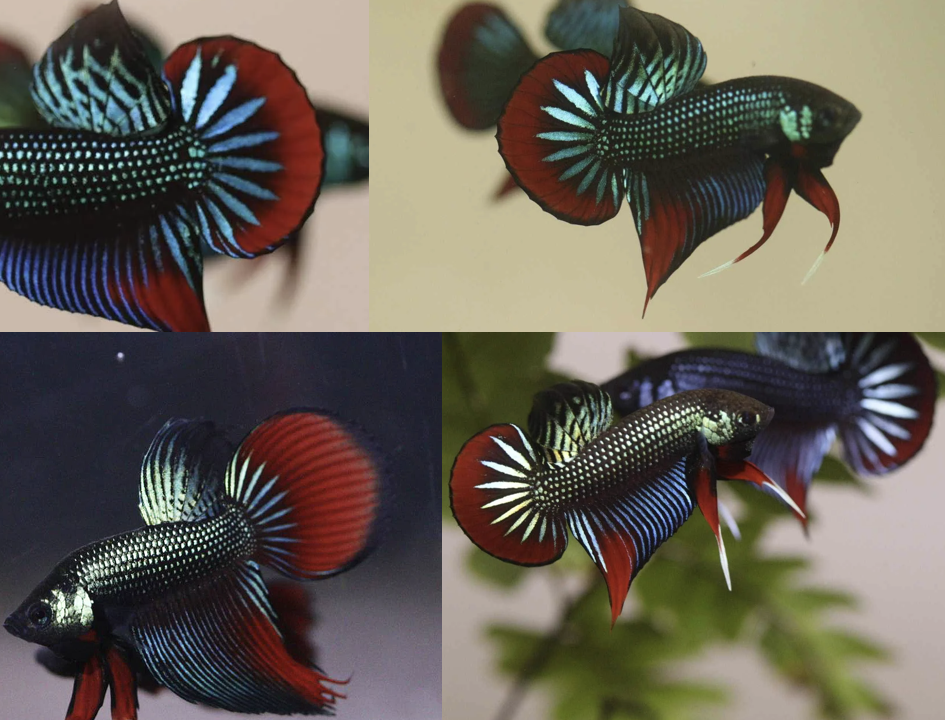

Photos from Franks Bettas
- Betta smaragdina (Emerald Betta): This betta glows with iridescent green and blue scales. They require a heavily planted environment with soft, acidic water to reach their full potential.


Photo credit: Fishy hub
Bubble Nesting vs. Mouthbrooding Betta Fish
Betta fish have two fascinating ways of caring for their young: bubble nesting and mouthbrooding.
- Bubble Nesters: Like Betta splendens, male bubble nesters create intricate floating nests from saliva bubbles. Eggs are deposited in the nest, and the male fiercely guards them.
- Mouthbrooders: Some betta species, like Betta imbellis, are mouthbrooders. The male or female carries the eggs in their mouth until they hatch, offering incredible protection.
These breeding behaviors affect how you care for wild bettas. Bubble nesters need a calm water surface, while mouthbrooders may need specialized environments to encourage spawning. Understanding how wild betta fish reproduce offers insights into their unique needs in captivity. We have a great article on betta fish eggs here.
Wild Betta Tank Setup
Replicating a wild betta’s natural habitat is crucial for their well-being. Here’s what you need to know:
- Tank Environment: Wild bettas typically inhabit shallow, slow-moving waters. Opt for smaller tanks (5-10 gallons for most species), densely planted with aquatic vegetation. Indian almond leaves offer beneficial tannins and mimic their native environment.
- Filtration Systems: Gentle filters, like sponge filters, are best. Wild bettas aren’t used to strong currents. You can also clean the tank using a suction vacuum.
Wild Betta Fish Care
- Comprehensive Care: Feed your wild bettas a varied diet of high-quality live or frozen foods like bloodworms, brine shrimp, and daphnia. Maintain pristine water conditions, and carefully select tankmates if you plan on a community aquarium (small, peaceful fish only). Breeding wild bettas can be rewarding, but research your specific species’ needs.
- Dealing with Diseases: The best disease prevention is a clean tank with optimal water parameters. Research common ailments in wild bettas and prioritize reducing stress in your aquarium.
Where to Buy Wild Betta Fish
- Ethical Purchasing: Choose breeders that prioritize conservation and ethical breeding practices. Look for certifications or a reputation for responsible sourcing.
Conclusion
Wild betta fish are incredible creatures with intricate behaviors and fascinating adaptations. By understanding their needs and respecting their delicate habitats, we can enjoy these captivating fish responsibly and help conserve them for future generations. Let’s all do our part to protect these remarkable jewels of Southeast Asia!
Where Do Betta Fish Live In The Wild


credit: Frank Sriboribun
Betta fish, commonly seen gracing enthusiasts’ ornate aquariums, captivate with their vivid colors and elegant fins. Popularly known as Siamese fighting fish, these creatures are often misconceived as simple decorative pets suited for small bowls or vases. However, the true story of bettas begins far from the confines of glass tanks in the vast, dynamic ecosystems of Southeast Asia. This post delves into wild betta fish’s natural origins and behaviors, uncovering a world vastly different from the one typically presented in pet stores.
Wild betta fish hail from the tropical waters of Thailand, Cambodia, Laos, and Malaysia—regions known for their rich biodiversity. Unlike the artificially enhanced colors seen in domesticated bettas, wild bettas blend more naturally into their environments. These fish are part of a larger genus that includes many species, some of which remain relatively unknown to the casual aquarist. Exploring these origins enriches our understanding and highlights betta fish’s adaptability and resilience in diverse habitats.

| Region | Some Common Wild Betta Species |
|---|---|
| Thailand | Betta splendens (Siamese fighting fish), Betta smaragdina (Emerald betta), Betta imbellis (Peaceful betta) |
| Cambodia | Betta stiktos, Betta siamorientalis |
| Laos | Betta falx, Betta simplex |
| Vietnam | Betta mahachaiensis, Betta prima |
Wild Betta Characteristics
The wild relatives of the domestic betta are generally less conspicuous, exhibiting subdued hues that serve as camouflage rather than decoration. Among the Betta genus, the splendens complex is perhaps the most famous, consisting of species like Betta splendens itself and its close relatives, which share similar morphological and behavioral traits. In contrast, species found on the islands of Borneo and Indonesia, such as Betta macrostoma, showcase different adaptations to their unique environments.
Habitat Types
In the wild, bettas inhabit shallow, warm waters like rice paddies, swamps, and slow-moving streams. These habitats are often low in oxygen, which has led bettas to evolve a labyrinth organ—a specialized part of their respiratory system that allows them to breathe air directly from the surface. This adaptation is crucial for survival in stagnant waters that heat up quickly under the tropical sun, reaching temperatures between 74°F and 85°F.
- Warm, tropical waters: Bettas need the temperature to stay within a comfortable range for their health.
- Shallow depth relates to their ability to gulp air from the surface when needed.
- Dense vegetation: Plants offer hiding places, a source of food, and even places for bettas to build nests.
- Tannins: As leaves and other organic matter decay in the water, they release tannins. These have a slightly brown tint but provide health benefits for bettas.
Wild Betta Behavior
Wild bettas are known for their complex behaviors, especially regarding territory and breeding. Males are fiercely territorial, often engaging in displays of fin spreading and color flaunting to deter rivals and attract mates. The species can be divided into two main reproductive groups: bubble-nesters and mouth-brooders. Bubble-nesters, like Betta splendens, create floating nests of air bubbles to protect their eggs and fry, while mouth-brooders, such as Betta macrostoma, carry their offspring in their mouths to ensure their safety.
Other Inhabitants and Environmental Interactions
Bettas share their natural habitats with various other species, including gouramis, rasboras, and barbs. These co-inhabitants often play a role in the dynamics of betta behavior, influencing everything from territorial disputes to breeding success. The dense vegetation and organic materials found in these waters provide hiding spots and breeding grounds for bettas and contribute to the ecological balance by offering shelter and resources to other species.
- Rice paddies: While man-made, these shallow, flooded fields provide a perfect home for bettas.
- Ponds and swamps: Lush with vegetation and teeming with insect life, these slow-moving waters suit bettas well.
- Slow-moving streams: The gentle flow of water is important, but some areas with low oxygen have led bettas to adapt by breathing air directly from the surface.
Reproduction Details
Reproductive strategies among wild bettas are fascinating and varied. Bubble-nesters guard their offspring until they are free-swimming, while mouth-brooders provide a mobile sanctuary for their eggs and fry, showcasing a remarkable commitment to parental care. These behaviors reflect adaptations to environmental pressures and predators, highlighting the complexity of life strategies evolved by bettas over millennia.
Conclusion
Understanding the natural conditions and behaviors of wild betta fish provides crucial insights for anyone interested in keeping these fish as pets. Aquarium enthusiasts can ensure a healthier, more vibrant life for their bettas by replicating aspects of their natural habitats and respecting their behavioral needs. Beyond decorative elements, bettas are a link to Southeast Asia’s rich and diverse aquatic life, deserving of both admiration and responsible stewardship.















